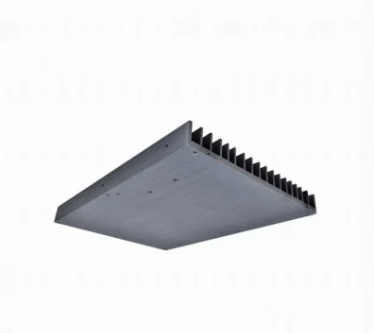- Time:2024/08/09 Posted:Dongguan Quality Innovation And Technology Co.,Ltd
In the fast-paced world of communication devices, durability, efficiency, and lightweight components are paramount. Aluminum alloy die cast parts have emerged as a top choice for manufacturers aiming to balance these needs effectively. Here’s a detailed look at why aluminum alloy die cast parts are ideal for communication devices, their key benefits, and solutions to common performance issues.
1. The Advantages of Aluminum Alloy Die Cast Parts
a. Lightweight and Strong
Optimal Strength-to-Weight Ratio: Aluminum alloys offer a high strength-to-weight ratio, making them perfect for communication devices where weight reduction is critical without compromising on strength. This helps in creating more portable and user-friendly devices.
Enhanced Durability: Die casting produces parts with excellent dimensional accuracy and strength. The resulting components are resistant to impact and wear, which is essential for devices that are frequently handled or subject to rough conditions.
b. Excellent Thermal and Electrical Conductivity
Heat Dissipation: Aluminum alloys have good thermal conductivity, which is crucial for communication devices that generate heat during operation. Effective heat dissipation helps maintain optimal performance and prolongs the lifespan of the device.
Electrical Conductivity: For devices requiring efficient electrical connections, aluminum’s electrical conductivity helps in ensuring reliable performance and reducing signal loss.
c. Precision and Complexity
High Dimensional Accuracy: Die casting allows for the production of parts with precise dimensions and tight tolerances. This is particularly beneficial for complex parts where high accuracy is required.
Complex Shapes: The die casting process can produce intricate designs and complex shapes, which are often needed in modern communication devices. This versatility allows for more innovative and compact designs.
d. Cost-Effectiveness
Efficient Production: Die casting is a highly efficient manufacturing process that reduces waste and minimizes production costs. The ability to produce high volumes of parts quickly makes it a cost-effective choice for mass production.
Low Post-Processing: The smooth surface finish of die-cast parts often reduces the need for additional machining or finishing, further lowering costs.
e. Corrosion Resistance
- Surface Protection: Aluminum alloys are naturally resistant to corrosion due to a protective oxide layer that forms on their surface. This makes them suitable for communication devices that might be exposed to various environmental conditions.
2. Common Problems with Aluminum Alloy Die Cast Parts and Their Solutions
Problem 1: Porosity
Causes:
- Air Traps: Porosity occurs when air bubbles get trapped in the aluminum during the casting process.
- Inadequate Venting: Poor venting in the mold can lead to trapped gases.
Solutions:
- Optimize Mold Design: Ensure that the mold is designed with adequate vents and runners to allow trapped gases to escape.
- Adjust Casting Parameters: Fine-tune the die casting parameters such as temperature and pressure to minimize the formation of porosity.
Problem 2: Surface Defects
Causes:
- Mold Contamination: Contaminants or debris in the mold can cause surface defects.
- Improper Cooling: Uneven cooling can lead to surface imperfections like sink marks or ripples.
Solutions:
- Maintain Mold Cleanliness: Regularly clean and inspect molds to prevent contamination.
- Control Cooling Rates: Implement consistent and controlled cooling processes to avoid surface defects.
Problem 3: Dimensional Inaccuracies
Causes:
- Tool Wear: Wear and tear on the die can lead to dimensional deviations.
- Temperature Fluctuations: Variations in mold temperature can affect part dimensions.
Solutions:
- Regular Die Maintenance: Perform routine maintenance and inspections on the die to ensure it remains in good condition.
- Stable Temperature Control: Maintain stable mold temperatures throughout the casting process to ensure consistent part dimensions.
Problem 4: Cracking and Fractures
Causes:
- High Casting Temperatures: Excessive temperatures can cause the aluminum to become brittle.
- Rapid Cooling: Rapid cooling can lead to internal stresses and cracking.
Solutions:
- Optimize Casting Temperature: Use the appropriate casting temperature to balance strength and ductility.
- Control Cooling Rates: Implement controlled cooling processes to prevent rapid temperature changes that can cause cracking.
Problem 5: Poor Surface Finish
Causes:
- Inadequate Mold Design: Poorly designed molds can result in rough surfaces.
- Material Quality: Low-quality aluminum alloys can lead to poor surface finishes.
Solutions:
- Improve Mold Design: Design molds with smooth surfaces and proper venting to enhance the finish of the cast parts.
- Select High-Quality Materials: Use high-grade aluminum alloys to achieve a better surface finish and overall part quality.

OEM/ODM aluminum alloy communication aluminum cavity parts die casting
Conclusion
Aluminum alloy die cast parts offer a range of benefits that make them ideal for communication devices, including lightweight strength, excellent thermal and electrical conductivity, precision, and cost-effectiveness. By addressing common issues such as porosity, surface defects, dimensional inaccuracies, cracking, and poor surface finish, manufacturers can ensure high-quality components that enhance device performance and durability.
For more information or assistance with aluminum alloy die cast parts, feel free to reach out to our experts. We’re here to help you make the most of this versatile and effective manufacturing solution!
